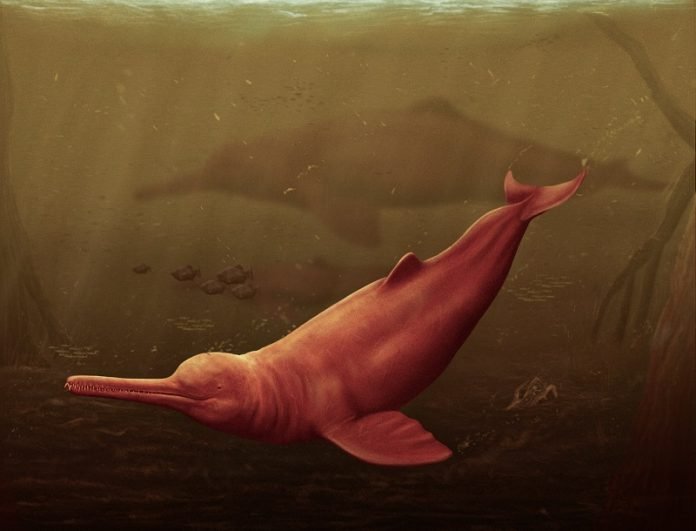
In a groundbreaking discovery, scientists from the University of Zurich have uncovered a new species of giant freshwater dolphin in the Peruvian Amazon.
This incredible find reveals a dolphin species that lived around 16 million years ago and measured an impressive length of 3 to 3.5 meters, making it the largest river dolphin ever discovered.
Unlike the river dolphins we know today, this ancient creature, named Pebanista yacuruna, shares its closest family ties with the river dolphins found in South Asia, despite being found so far away in the Amazon.
River dolphins are some of the most unique and endangered creatures in our waters today.
The discovery of Pebanista yacuruna provides crucial insights into the evolution and diversity of these fascinating animals.
Unlike the dolphins swimming in our oceans and rivers today, the ancient Pebanista belonged to an old group called Platanistoidea, which thrived in the world’s oceans millions of years ago.
This new dolphin species tells us a story of a time when the Amazon wasn’t the vast rainforest we see today but a massive system of lakes and swamps known as Pebas.
This area stretched across several South American countries and was home to a rich variety of life.
The ancient dolphins moved from the sea to these freshwater habitats, finding a bounty of food and a new way of life.
However, as the Amazon landscape changed and turned into the rainforest we know today, Pebanista’s way of life was threatened.
The change led to the disappearance of their food sources, ultimately driving these giant dolphins to extinction and paving the way for the ancestors of today’s Amazon river dolphins to take their place.
One of the most interesting findings about Pebanista yacuruna is its advanced echolocation abilities, a skill that today’s river dolphins heavily rely on to navigate and hunt in murky waters.
This discovery was quite a surprise since the researchers were expecting to find a species closely related to the current Amazon river dolphins. Instead, they found that Pebanista’s closest relatives are the South Asian river dolphins.
The discovery of this ancient giant dolphin highlights the Amazon’s significance not only as a biodiversity hotspot today but also as a cradle for ancient species.
However, finding fossils in the Amazon is a daunting task.
The team, led by a Peruvian paleontologist, embarked on a challenging expedition that lasted nearly three weeks.
It was only at the end of their journey that they found the large dolphin skull, a find that marked a significant moment in paleontology.
This discovery not only sheds light on the complex history of dolphin evolution but also underscores the importance of preserving our natural world, where mysteries of the past still wait to be uncovered.



